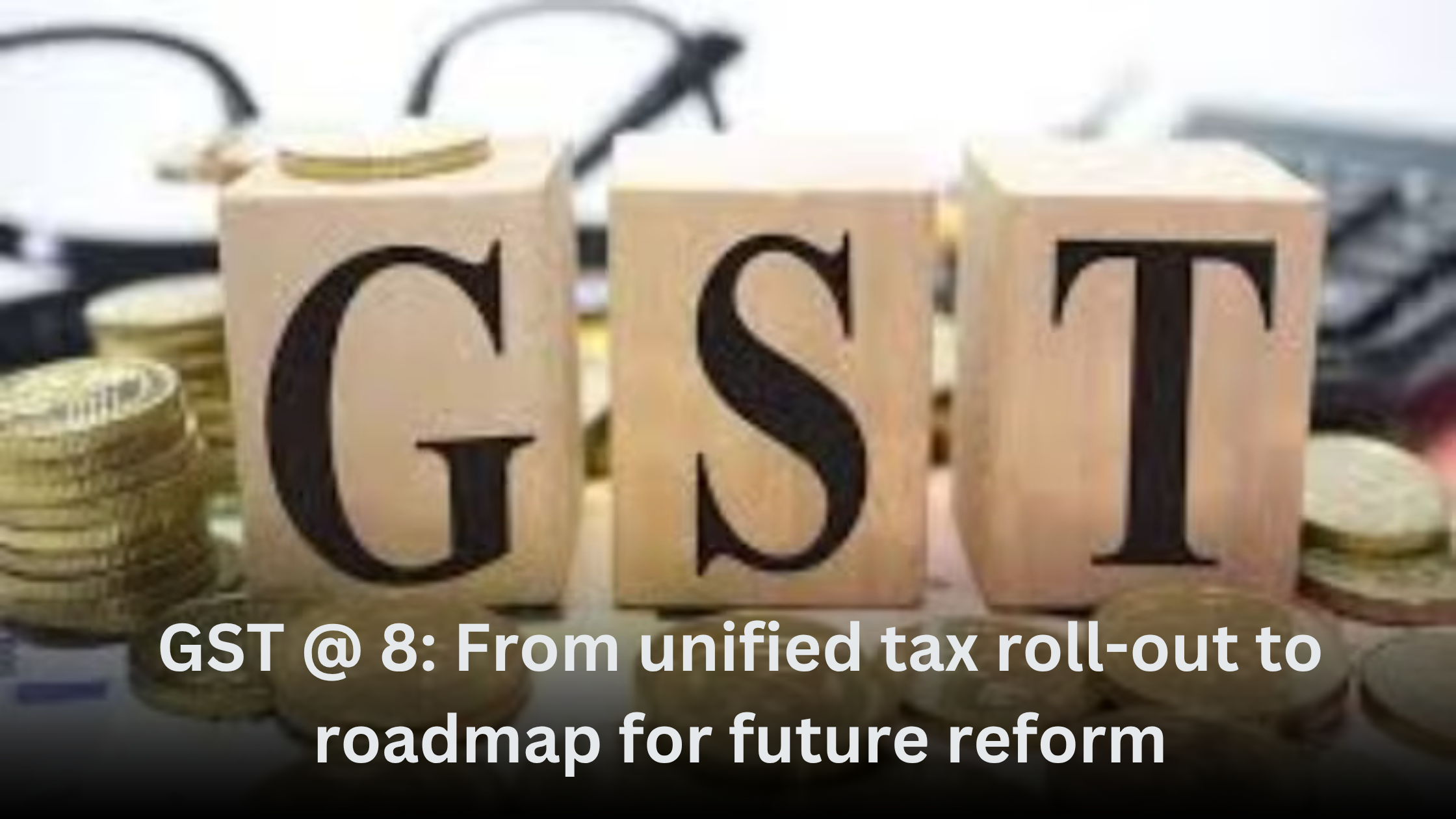India’s Goods and Services Tax (GST) has turned eight years old. Launched on July 1, 2017, GST aimed to bring a uniform tax system across the country, replacing a complex web of central and state taxes. Eight years later, it has become a key part of India’s indirect tax system and continues to evolve. As we mark this milestone, it’s important to look back at how GST changed the country’s tax landscape and where it is heading next.
A Unified Tax System
Before GST, businesses had to deal with many taxes like VAT, service tax, excise duty, and more—each with its own rules and rates. This led to confusion, higher costs, and tax on tax (called cascading). GST replaced over 17 indirect taxes and brought them under one umbrella.
The goal was to create “One Nation, One Tax.” This made doing business easier, especially for companies operating in multiple states. It also aimed to boost tax compliance by creating a transparent and digital system.
Key Achievements So Far
1. Higher Tax Collection:
In 2024-25, GST collections have shown strong growth. Monthly GST revenue has crossed ₹1.7 lakh crore several times. This shows better compliance and a broader tax base.
2. Digital Transformation:
GST made tax filing online and automated. The GST Network (GSTN) handles registrations, returns, payments, and refunds—all digitally. This has reduced human interaction and made the process more efficient.
3. Boost to Ease of Doing Business:
For many businesses, especially small and medium ones, GST has reduced the burden of handling multiple taxes. Input Tax Credit (ITC) ensures tax is paid only on value addition, making the system more business-friendly.
4. Wider Tax Base:
More people and companies are now part of the tax system. The number of GST-registered taxpayers has more than doubled in the last eight years.
Challenges That Remain
1. Complex Rate Structure:
There are still multiple tax slabs—0%, 5%, 12%, 18%, and 28%—which create confusion. Many experts and industry bodies have been asking for fewer and simpler slabs.
2. Compliance Burden:
While filing is online, small businesses still find it hard to keep up with monthly returns, reconciliation, and audit requirements.
3. Delay in Refunds:
Exporters and small businesses have often complained about delays in getting refunds, which affects their working capital.
4. States’ Revenue Concerns:
After the compensation period ended in 2022, some states have raised concerns about a drop in their revenue growth. The center has assured them of support, but the matter needs long-term clarity.
Roadmap for the Future
As GST enters its ninth year, the government and GST Council are looking at further reforms to make the system more efficient and business-friendly.
1. Rate Rationalization:
The GST Council is working on merging some tax slabs to reduce confusion. For example, there are talks of merging the 12% and 18% slabs.
2. Inclusion of More Items:
Petroleum, electricity, and alcohol are still outside GST. Including them will make the system more complete and reduce cascading taxes in these sectors.
3. AI and Data Analytics:
GSTN is using artificial intelligence and big data to detect fraud and ensure better compliance. This can reduce tax evasion and improve trust in the system.
4. Ease for Small Businesses:
The government may further simplify filing and compliance for small taxpayers under the Composition Scheme and expand QRMP (Quarterly Return Monthly Payment) facilities.
GST has come a long way in eight years. It replaced a maze of taxes with a single, digital, and transparent system. While there have been teething issues, the overall direction is positive. The GST Council continues to work on fixing loopholes, making compliance easier, and ensuring fair revenue sharing between the center and states.
